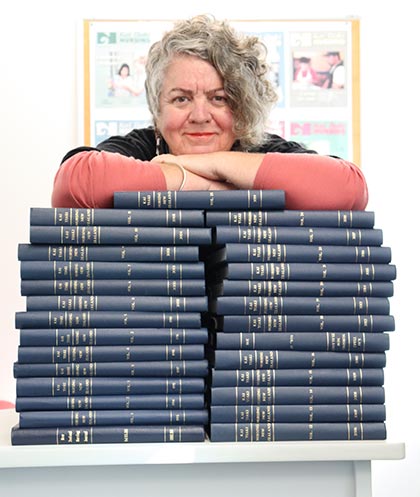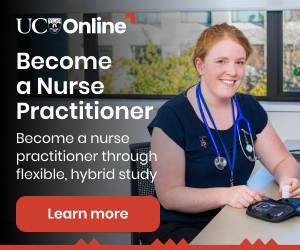
In the late ’80s, I left journalism to become a nurse. I was full of optimism about my new career. The pressures of daily deadlines would be replaced with other, far more consequential pressures. The contacts made in daily journalism would be replaced by the “privileged intimacy” of the nurse / patient / whānau, relationship. The milieu of the male-dominated, banter-filled (and, until the mid ’80s, smoke-filled) newsroom would be replaced by the female-dominated, patient-orientated ward.
And so it turned out. But what I hadn’t reckoned on was the inherent conformity of the profession I was joining, compared to the trade I’d just left. Or the rigidity and spirit-sapping nature of the system within which I had to work. While I loved that “privileged intimacy” and realised nursing was, indeed, one of the worthiest professions, I was simply not cut out to work in what I experienced as an authoritarian, hierarchical and alienating system. Needless to say, I didn’t last. But I have enormous admiration for those who navigate that system under ever-increasing pressures of patient acuity, time, short staffing, workloads, technology and paperwork.
Continuous publication
On my last day of work as a nurse, I was informed by an NZNA staffer of a co-editor vacancy at Kai Tiaki Nursing New Zealand and I applied. The role seemed to be a perfect marriage of my two trainings. And so it turned out. For the last 29 years, I have had the pleasure and privilege of being a co-editor of a journal in continuous publication since 1908 – world wars and pandemics have not closed it down. A journal which has charted the development of nursing and the challenges it has faced within Aotearoa / New Zealand for more than a century. A journal which has been, unashamedly, a women’s publication. A journal which has reflected the development of a professional association and, more latterly, a trade union, and the contradictions and paradoxes inherent in that combination. A journal which has contributed to, and hopefully will continue to contribute to, the social history of this country. I am deeply grateful to have played a small part in recording the first draft of these multiple histories.
I never intended to stay so long. But life circumstances were such that I continued longer (much longer!) than originally anticipated. And to work for an organisation whose values have, for most of my time with NZNA/NZNO, aligned closely with my own is a rare privilege in today’s corporate-dominated media world.
As I reflect on 29 years of reporting on the nursing profession, the phrase which keeps recurring is: “Plus ça change, plus c’est la même chose – the more things change, the more they stay the same.”
Close to 30 years on, nurses are still not paid adequately for their work. District health board (DHB)-employed nurses are right now considering an offer from their employers. Primary health care nurses had to take strike action to secure a pay increase that brings them up to DHB pay rates. Many nurses working for Māori and iwi providers are paid considerably less than their DHB counterparts. Aged-care nurses are undervalued. The rhetoric about the value of nurses and nursing in the context of COVID-19, is just that – rhetoric.
Workloads for many nurses remain unreasonable, for some unbearable. Fatigue and burnout are constant. And sadly, the inevitable outcome of a highly stressed, hierarchical environment – bullying – remains endemic. Patient acuity is far greater, hospital stays are far shorter and short staffing seems entrenched.
The legacies of neoliberalism in the health sector – health and employment law “reforms”, general managerialism, the overweaning focus on the bottom line – remain profoundly damaging. The latest example of this legacy is the appointment of a former director-general of health, but now a consultant with global accountancy firm EY, Stephen McKernan, to head the transition unit implementing the recommendations of the health and disability review. If that were not proof enough that neoliberalism in now deeply embedded in the collective health mindset, the fact that not one nurse is on that transition unit is further proof. That omission beggars belief. Or does it?
The power structures within the system are not, and never have been geared to an equality of influence. Nurses comprise around 68 per cent of the total health workforce; would that their influence within the system was commensurate with that. But we all know the system was designed by, and for doctors, and while there have been some gains and changes here and there, the fundamental power structures have not altered. Perhaps the old triumvirate of matron, medical superintendent and hospital board secretary ensured a more powerful nursing voice at the fulcrum of power?
The only only ones who can lever that influence are nurses themselves. And, nearly 30 years on, there seems little appetite to do so. Those in power never yield it voluntarily. And until nurses are prepared to unite to challenge the foundational power structures of the system, only cosmetic changes will ever occur. While the exhausting nature of nursing work mitigates against political agitation, it is only by such action that meaningful change will be made.
If anyone doubts the power structures in health are stacked against nurses, they simply have to ask: Why are there no creches at hospitals? Why are there not more flexible shifts? Why do pregnant nurses have to formally ask not to do night shifts after 26 weeks, when that is automatic for doctors? Why do specialists receive $16,000 a year for continuing medical education when nurses receive a comparative pittance? Why have there been unconscionable delays in implementing care capacity demand management in too many DHBs?
Power of communications staff
While the worst excesses of the health “reforms” of the ’90s have been wound back, another legacy of that era is the power of communications units within the sector. In the bad old days of crown health enterprises, positive media coverage was a key performance indicator. The legacy of that particular madness is that now every DHB and many private health providers have communications units churning out positive stories. That, in itself, is not necessarily a bad thing, but the fact communications staff can alter nurses’ words with impunity is. Over the years, Kai Tiaki co-editors have often struggled with DHB communication staff – to get their permission to cover nurses’ stories, we have often had to agree to let communications staff approve the stories. Way too often these non-health professionals alter nurses’ words. So what about the catch cry of the nurse as autonomous health professional? Yes, but they can’t really be trusted to tell it like it is. Given this disrespect for nurses’ views, is it surprising so many are reluctant to speak out about what’s actually happening in their workplaces?
Thirty years ago, when working as a staff nurse, I was sacked for writing an editorial in the Listener critical of Ruth Richardson’s “mother of all budgets”, which was the harbinger of the “reforms” that lay ahead. As the general manager sacked me, the director of nursing stood mute. Thanks to legal protections and NZNA, I was reinstated, but with a final warning placed on my personal file. Intimidation may not be as overt now, but it still exists. As former NZNO chief executive Memo Musa noted in his farewell interview in the February issue of Kai Tiaki Nursing New Zealand: “The sector is riddled with a blaming culture. We must collectively work to… stop the fear of retribution for those who speak out.”
Muzzled or fearful nurses cannot be the advocates patients so desperately need in this underfunded, increasingly stressed system.
Muzzled or fearful nurses cannot be the advocates patients so desperately need in this underfunded, increasingly stressed system. But nurses must be courageous when patient care is compromised – and remember their organisation is there to support them in doing so.
So how does nursing leadership fit in all this? With some difficulty. Every nursing leader – be they in the public or private system, education or academia – is serving two masters: their employer and their profession. Most nursing leaders work tirelessly within the constraints imposed by the DHB / private hospital / polytechnic / university management, to promote and protect nursing but, when push comes to shove, the employer’s agenda will always win out.
Ongoing health inequities still plague the system. Again, not until the fundamental power structures within it change, will those inequities diminish. Anything else is just fiddling around the edges. Hopefully, an independent, properly funded Māori health authority will result in a realignment of power structures, which will help ameliorate health inequities.
Another aspect of the profession that hasn’t changed – and perhaps it should – is nurses’ dedication to do the best they can in increasingly difficult working environments. Nurses’ willingness to go the extra mile – mostly unpaid – has probably done them little good, though it has, undoubtedly, benefited those they care for. That generosity of spirit has been exploited for too long.
One of the great pleasures of this role has been telling nurses’ stories, hopefully reflecting the diversity and dedication of this workforce. Kai Tiaki Nursing New Zealand has been the vehicle for a fraction of those stories. I hope it will continue to be, as it moves into a new online era. I also sincerely hope that its editorial autonomy – a key to its longevity – will continue. And that it will not evolve into what all other union magazines in the country have become – communications-driven publications only ever publishing positive stories.
It has been said that journalists write the first draft of history. While not wanting to sound pompous, as co-editors, we have a debt to history and to future generations of nurses: to record as faithfully as we can, a factual version of that history, not a sanitised version.
It has been personally and professionally rewarding to have worked with three talented and committed co-editors in my years at Kai Tiaki Nursing New Zealand – Anne Manchester (for 25 years!), Kathy Stodart and Mary Longmore. Long may it continue to attract skilled journalists who understand the importance or recording nurses’, the profession’s and the organisation’s stories for posterity.
I’ll take this opportunity to thank each and every nurse for their mahi. And to urge each and every nurse to ponder the power of their political action in creating a more just health system for all.



